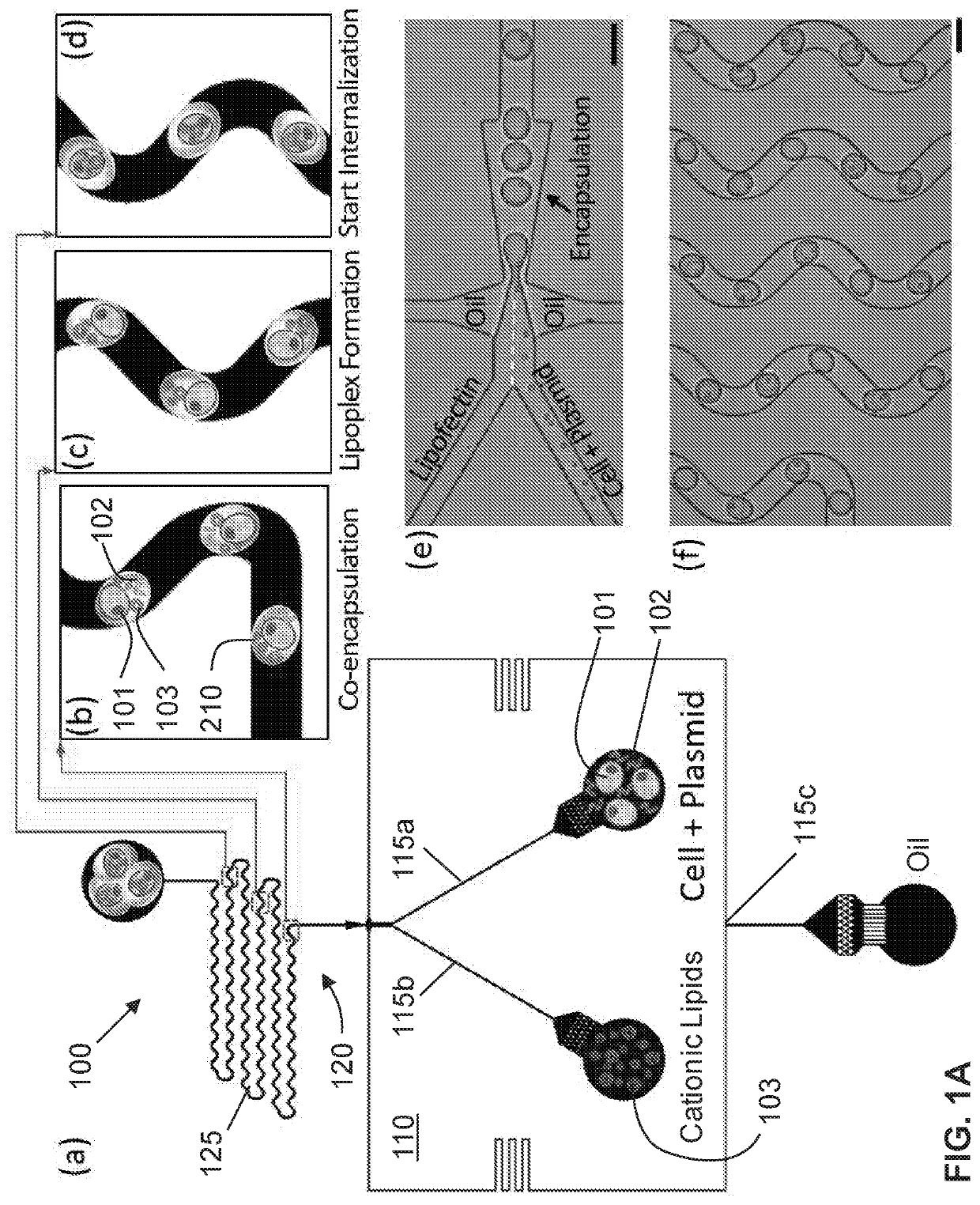Microfluidic systems and methods for lipoplex-mediated cell transfection
a technology of lipoplex and cell transfection, applied in the field of cell transfection, can solve the problems of low transfection efficiency/accuracy, complicated procedures of the transfection method, and damage to cell viability, and achieve the effects of improving the transfection efficiency, enhancing green fluorescence protein, and increasing cell membrane permeability
- Summary
- Abstract
- Description
- Claims
- Application Information
AI Technical Summary
Benefits of technology
Problems solved by technology
Method used
Image
Examples
experimental example
[0074]The following is a non-limiting example of the present invention, in particular, to a microfluidic system and use thereof. The example is for illustrative purposes only and not intended to limit the invention in any way. Equivalents or substitutes are within the scope of the invention.
[0075]Chip Fabrication and Experimental Setup
[0076]The presented microfluidic device was fabricated via soft lithography. A 30-μm high SU-8 master mold was patterned on a silicon wafer using standard photolithography, whereafter liquid polydimethylsiloxane (PDMS) mixture comprising a base and curing agent at a 10:1 ratio was cast on the mold and cured for 3 h in a convection oven at 65° C. for complete cross-linking. The PDMS microchannel was then peeled off from the mold and irreversibly bonded to a clean glass slide after oxygen plasma treatment for 60 s. The sealed chip was baked at 120° C. overnight to secure the channel hydrophobicity. All the reagents were driven into the microfluidic chip ...
PUM
| Property | Measurement | Unit |
|---|---|---|
| Pressure | aaaaa | aaaaa |
| Flow rate | aaaaa | aaaaa |
| Shear stress | aaaaa | aaaaa |
Abstract
Description
Claims
Application Information
 Login to View More
Login to View More - R&D
- Intellectual Property
- Life Sciences
- Materials
- Tech Scout
- Unparalleled Data Quality
- Higher Quality Content
- 60% Fewer Hallucinations
Browse by: Latest US Patents, China's latest patents, Technical Efficacy Thesaurus, Application Domain, Technology Topic, Popular Technical Reports.
© 2025 PatSnap. All rights reserved.Legal|Privacy policy|Modern Slavery Act Transparency Statement|Sitemap|About US| Contact US: help@patsnap.com



